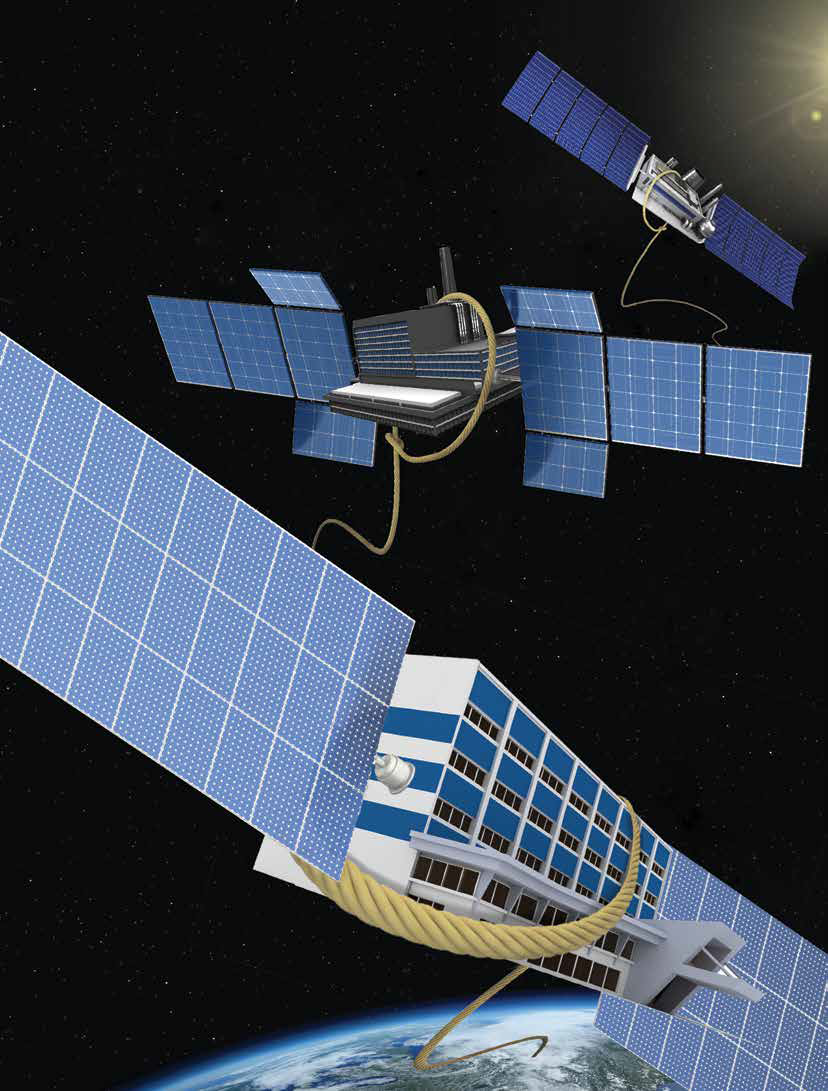
CHEAT SHEET
- Why sue the buyer? Direct v. indirect patent infringement between the buyers and sellers of multiple components often leaves the buyer as the sole target for litigation.
- Satellite litigation. When multiple sellers contribute to the creation of a product that is undergoing patent infringement, satellite litigation ensues to connect every party involved.
- Contractually obligated. Indemnity obligation varies by state and country, with some that require a “duty to defend” and others that remain unclear on the subject.
- Duty to defend. It is necessary that a given buyer provides transparency through the indemnification process to ensure confidence in the seller’s compensation.
This article discusses considerations in drafting contractual indemnification provisions for what we call the “multiple supplier scenario.” The multiple supplier scenario arises when multiple companies supply components to a buyer that then incorporates these components into its products. Each of the suppliers contractually agree to indemnify the buyer should the buyer face patent infringement claims. A patent holder subsequently sues the buyer, but not the suppliers. This can result in satellite litigation over apportionment of defense costs and any settlement or award.
Why sue the buyer (and not the supplier)?
In the United States, patent infringement may be direct or indirect. Whoever makes, uses, offers to sell, sells, or imports a patented article without authority is liable for direct patent infringement.1 To directly infringe, a single party must meet all limitations of a given patent claim.
If a party does not meet all limitations of a patent claim, that party may still indirectly infringe. For example, a component manufacturer may not directly infringe, but may sell to a buyer who uses the component in a final product that directly infringes.
There are two categories of indirect infringement: inducement and contributory. To prove inducement, a patentee must show that: (1) another entity infringes; (2) the accused inducer had knowledge of the patent; and (3) the accused inducer knew the induced acts constituted infringement.2 To show contributory infringement, the patentee must show that: (1) there is direct infringement; (2) the accused infringer had knowledge of the patent; (3) the component has no “substantial noninfringing uses;” and (4) the component is a “material part” of the invention.3
Frequently, a patent holder will sue the buyer/product seller rather than suing the component supplier. A patent holder may solely pursue the buyer for a variety of reasons, such as when:
- The asserted patent claims are directed to a system that involves other components in addition to the supplier’s component (i.e., the buyer directly infringes and the supplier does not).
- The buyer and the patent holder are competitors and the patent holder has business reasons to target the buyer.
- The patentee believes it can obtain more money by licensing various buyers as opposed to licensing a comparatively smaller number of component manufacturers. That is because once the patentee licenses a given component supplier, buyers will assert that they are also licensed (by virtue of the component supplier being licensed). Buyers will also assert that the patent is exhausted.4 Further, buyers may assert that any recovery against them is otherwise barred because the patentee has already recovered sufficient damages.
- The component manufacturers may be less likely to settle and more likely to defend vigorously (they may have more at stake).
1 See 35 U.S.C. § 271(a).
2 See 35 U.S.C. § 271(b); Commil USA, LLC v. Cisco Sys., 135 S. Ct. 1920, 1926 (2015).
3 See 35 U.S.C. § 271(c); Commil, 135 S. Ct. at 1926.
4 The doctrine of patent exhaustion (or “first sale” doctrine) addresses the circumstance in which the sale of a patented article (or an article sufficiently embodying a patent), when the sale is made or authorized by the patentee, confers on the buyer the authority to engage in acts involving the article that would be infringing in the absence of such authority. See Lexmark Int’l, Inc. v. Impression Prods., 816 F.3d 721, 726 (Fed. Cir. 2016) (en banc).
Satellite litigation against the suppliers over the amount of indemnification
Often, a given buyer will source components — and even the same type of components — from multiple suppliers. For example, smartphone manufacturers often purchase semiconductor chipsets from multiple suppliers. Those manufacturers then incorporate the different chipsets into different smartphones. When a patent holder sues a buyer/end product seller and asserts claims implicating components of the accused products, the case may implicate more than one of the component suppliers.
Frequently, suppliers of product components, especially in the high-technology sector, agree to indemnify a buyer should that buyer face claims of patent infringement relating to the purchased components. When a patentee sues a buyer (but not the suppliers) for patent infringement, and multiple suppliers’ components are implicated, satellite litigation can ensue over the amount of indemnification that each supplier owes to the buyer. This happens for seven major reasons.
- Patent cases inherently involve common issues irrespective of the number of suppliers implicated. Nearly all patent cases in the United States turn on not only whether the patent is infringed, but also on whether the patent is invalid and/or unenforceable. An accused infringer nearly always defends on the ground that the patent is invalid (i.e., that even if the patent is infringed, the patent was erroneously issued). For example, the patented invention might not be novel, but instead was already publicly known. Invalidity turns on the patent itself and the state of the technology at the time the patent was filed, and not on the number of accused products or suppliers implicated. Further, in every patent case, the parties dispute the scope of the patent by debating the meaning of certain patent terms. The court must issue an order interpreting the disputed terms to provide guidance for the jury. This is a crucial set of events in every patent case, and the term disputes do not directly correlate with the number of accused products/suppliers. Furthermore, different components are usually accused for similar reasons. A defense that the products/components do not infringe usually requires litigation of common issues, and involves technology and damages experts that address issues with respect to the full set of accused products.
- As the case progresses, the patentee may accuse additional products, withdraw allegations against some products, assert additional patents, and stop asserting other patents. Any of the foregoing may affect the number of suppliers implicated in the case. Also, there are typically fewer products accused at the outset of a case, before the patentee obtains discovery. The buyer, however, may anticipate that other products/components will be accused, and so may begin accruing legal fees relating to those products/components as it begins preparing its defense.
- Judgments/verdicts are usually not broken out according to specific components, or even products.
- Settlements of patent suits usually include licenses and/or covenants not to sue. These may be directed to patents and/or to products that the patentee stopped asserting or accusing during the course of the litigation. However, in an effort to avoid future disputes, the settlement may dispose of claims relating to those (withdrawn) patents and/or products.
- The accused technologies may not be limited to the suppliers’ technologies. Rather, the buyer’s own technology may also be accused. Additionally, the accused technology may be a combination of a supplier’s technology and the buyer’s own technology.
- Patent litigation in the United States is very expensive. According the American Intellectual Property Law Association, the average patent litigation cost where anywhere from US$1 million to US$10 million is at risk is US$2 million through trial.5 Adding to this, a buyer who believes it will be indemnified may not carefully manage its litigation counsel for cost efficiency. This can then lead to further disputes between the suppliers and the buyer regarding whether defense costs were reasonably incurred by the buyer,6 and if indemnification must be litigated, may lead to a battle of experts on this issue.
- A supplier may face a situation in which it is the “last man standing,” meaning the buyer has settled any potential indemnification disputes with other suppliers but then seeks to recoup an unreasonably large sum from the remaining supplier.
For all of the above reasons, in the multiple supplier scenario, it is necessary to apportion indemnity obligations, and advisable to consider addressing this in the contractual indemnity provisions. These indemnity obligations may relate to defense costs, settlement costs, and/or judgment costs, depending on the particular indemnity provision and the governing law.
5 Where less than $1 million is at risk, the cost is $600,000; where $10 million to $25 million is at risk, the cost is $3.1 million, and where more than $25 million is at risk, the cost is $5 million. Am. Intellectual Prop. Law Ass’n, 2015 Report of the Economic Survey (2015), at 37.
6 See, e.g., Cal. Civ. Code § 2778 (3) (“An indemnity against claims, or demands, or liability, expressly, or in other equivalent terms, embraces the costs of defense against such claims, demands, or liability incurred in good faith, and in the exercise of a reasonable discretion.” (emphasis added)).
Contractual indemnity obligations in the United States
US law regarding the scope of contractual indemnity obligations varies in California, New York, and Delaware regarding the degree that indemnifications are examined, as technology supply agreements often use state law as governing law.
California
In California, “unless a contrary intention appears … [a]n indemnity against claims, or demands, or liability, expressly, or in other equivalent terms, embraces the costs of defense….”7 Further, “[t]he person indemnifying is bound, on request of the person indemnified, to defend their actions.… If, after request, the person indemnifying neglects to defend the person indemnified, a recovery against the latter suffered by him in good faith, is conclusive in his favor against the former.” The duty to defend is owed when facts are alleged (not proven) that would give rise to the duty of indemnity.8 In other words, in California, a contract to indemnify a person includes a duty to defend that person for actions potentially encompassed by the indemnity provision.
This duty to defend is problematic in the multiple supplier scenario. A single supplier should not be required to assume defense of the entire suit, which involves some issues that only implicate other suppliers, and may involve other issues that only implicate the buyer. Neither the common issues nor the issues only implicating the buyer are amenable to clean division amongst the suppliers.
Significantly, under California law, “[p]arties to an indemnity contract can easily disclaim any responsibility of the indemnitor for indemnitee’s defense, or the costs thereof. Short of that, they can specify that the indemnitor’s sole defense obligation will be to reimburse the indemnitee for the costs incurred by the latter in defending a particular claim.”9 Thus, while California imposes a duty to defend, it provides the parties an opportunity to specify in the agreement exactly what the indemnity provision will cover.
New York
By contrast, New York does not have such broad statutory law governing all contracts for indemnity.10 Instead, the duty to defend turns on the language of the indemnity provision itself.
Thus, where a contractual indemnity provision required indemnification against “any and all injury, loss, or damage of whatever in nature,” a New York court held that the “right to indemnity includes the reasonable costs of defense incurred in good faith….”11
Delaware
Delaware law is not entirely clear. However, it appears that a contractual indemnification provision will probably not impose a duty to defend or reimburse for defense costs where it only imposes a duty to “indemnify,” as opposed to “indemnify and defend,” or “similar language to that effect,” and the indemnitee is not found liable.12
7 Cal. Civ. Code § 2778.
8 Crawford v. Weather Shield Mfg., Inc., 44 Cal. 4th 541 (2008).
9 Id. at 560.
10 New York has a statute addressing indemnification, but it is limited to “personal injury, injury to property or wrongful death.” See N.Y. Civ. Prac. Law and Rules (CPLR) § 1401 (2016).
11 Klock v. Grosodonia, 674 N.Y.S.2d 187 (N.Y. App. 1998).
12 However, in Pike Creek Chiropractic Center, P.A. v. Robinson, 637 A.2d 418 (Del. 1994), the Delaware Supreme Court addressed when a duty to indemnify commences — based on a plaintiff’s allegations or based on actual facts of liability subsequently developed. An employee contracted to “hold the Employer harmless and indemnify the Employer … against any liabilities and expenses, including attorney’s fees, which result from any acts and admissions [sic: omissions] of the Employee.” Id. at 419-20. The court found the correct approach was to base indemnification duty on the employee’s “actual wrongdoing or lack thereof, not a third-party plaintiff’s allegations….” Id. at 421. The court went on to hold the employee liable for defense costs where plaintiff’s action was predicated on vicarious liability, and the employee had refused to defend but subsequently settled the underlying action. In so ruling, the court quoted a case from the Alaska Supreme Court: “If the right to costs and attorneys’ fees for defending the law suit is made contingent on the indemnitor losing on the merits of that action, in every case the indemnitee would be put in the difficult position of attempting to show lack of his own culpability at the same time that he is aiding the plaintiff’s case by attempting to prove the liability of his indemnitor. Such a situation certainly would be contrary to the indemnitee’s and the indemnitor’s interests in many instances, and we decline to create an incentive for accomplishing that result.” Id. at 421-22. The court further reasoned that “such a requirement would be inconsistent with settled Delaware law favoring settlements.” Id. at 422.
Negotiating and drafting indemnification clauses in the multiple supplier scenario
When negotiating an indemnification clause for patent infringement suits and there is the possibility of a multiple supplier scenario, careful consideration should be given to at least the following: (1) the duty to defend/reimburse for defense; (2) notice to indemnitor; (3) apportionment of defense costs among multiple suppliers and the buyer; (4) the definition of the supplied technology; (5) apportionment of any settlement/judgment; and (6) an indemnification cap.
These issues are discussed in detail below. However, it is critical to note that while one could theoretically design an ideal indemnity provision to address one’s own concerns, the agreed upon indemnity provision is most often determined by which party to the contract has the most leverage. Furthermore, expressly addressing these issues may at times raise a red flag for the party at the other end of the negotiating table, who may then pull litigators into the negotiation. Additionally, depending on the technology, potential risk, and contractual language, a party may benefit from ambiguity in the indemnification provision.
Duty to defend/reimburse for defense
Defending patent infringement suits is a very expensive endeavor, which can often run into the millions of dollars if a US District Court case is litigated through trial. For this reason, buyers requiring indemnification provisions typically require indemnification for defense costs.
Some suppliers will negotiate an indemnification provision requiring the buyer to give the supplier “sole control” of the defense. For the reasons explained above, this does not work in the multiple supplier scenario because at least one other supplier’s technology and perhaps even the buyer’s own technology is also implicated.13 Nor does a “duty to defend” work, as opposed to a duty to reimburse for defense costs.14
13 For these same reasons, a supplier cannot simply assume “sole control” over settlement negotiations in the multiple supplier scenario.
14 A supplier can of course attempt to intervene in the litigation, or can otherwise assist with defense, and a supplier should consider doing so.
Notice
A typical indemnification clause will require the buyer to provide the supplier with notice of any claims, demands, or actions. An indemnification provision should require prompt notice, in writing, and it is generally beneficial to specify a time limit. Further, it is usually helpful to require that a party conducting settlement discussions provide prompt notice to the other contracting party as well.
Apportionment of defense costs among multiple suppliers and the buyer
One should consider whether to clearly define how indemnification for defense costs, if applicable, will be apportioned in the multiple supplier scenario. To date, there is no case law in the United States that requires a particular method of apportioning defense costs in the multiple supplier scenario. Rather, should the contracting parties end up in litigation over indemnity obligations, apportionment will likely end up in the hands of a jury.
The following are four potential apportionment methods to consider.
Number of asserted patents/suppliers
The costs of defending a patent lawsuit are to a large extent driven by the number of patents asserted. For each asserted patent, the disputed terms must be interpreted, and it must be decided whether the patentee has proven that the patent is infringed, and whether the accused infringer has proven that the patent is invalid or unenforceable. The more patents that are asserted, the higher the defense costs.
A patent family is a group of patents that are related by common subject matter and based on a common parental patent application. There are common issues for a given patent family. Thus, apportionment can be based on the number of patent families asserted.
To apportion according to this method, one can apportion costs equally among the patent families, then equally among the suppliers implicated for each patent family. For example, if there are four patent families asserted, say patent families A, B, C, and D, then 25 percent of the defense costs are apportioned to each patent family. If five suppliers are implicated for patent family A, then each supplier will be apportioned five percent of the total defense costs (25 percent divided by five = five percent per supplier). The apportionment can change for given time periods if products/technologies are added or dropped from the suit. Further, this method can account for suits in which the buyer’s own technology is also accused.
Supplier revenue from sales of products to buyer
This method involves apportioning based on each supplier’s revenue from the sales of its components to the buyer (i.e., what the buyer paid each supplier). This can be calculated by taking the total amount that the buyer paid for all components over a given time period, and then assigning defense costs to each supplier based on the percentage of the total amount that the buyer paid that supplier.
One downside of this method is that it cannot account for defense costs related to defending accusations against the buyer’s own technology. Further, disputes could arise over the time period for measuring sales. For example, sales made before the patent infringement damages period began should arguably not be counted.
Number of different accused products containing each supplier’s component(s)
This method involves apportioning based on the number of different product models that contain each supplier’s components. Apportionment can be calculated by taking the total number of different product models accused of infringement, and then dividing equally among the product models. In other words, one would divide the defense costs among the product models equally, and the supplier would be assigned liability based on its relative proportion. This method can account for products being added/dropped during the lawsuit. It can also account for the buyer’s own accused products that do not include any supplier technology.
Buyer’s revenue from sales of accused products incorporating each supplier’s component(s)
This method involves apportioning based on the buyer’s own revenue. The underlying theory is that a patent holder will vigorously pursue claims against products that have generated more revenue, as the potential damages will be higher. In turn, one could theorize that a buyer will more vigorously defend, and thus incur higher defense costs, for products with higher exposure. To calculate apportionment, one would take the buyer’s total revenues from all accused products, and then apportion a percentage of the total defense costs to each supplier based on the product’s relative proportion of revenue. A downside to this method is that it is difficult to account for products being added to or dropped from the lawsuit.
The definition of supplied technology
One should carefully consider how to define the supplied technology, and should specifically define it. A contracting party should also consider how to tie that defined technology into the indemnification obligations. For example, it may be agreed that defense obligations will only arise “to the extent the action is based upon a claim that the [defined device] infringes.” The clause might also carve out “any buyer technology” from that defense obligation. Additionally, a supplier may seek to exclude combinations of supplier and buyer technology in certain instances.
As to any award or settlement, it might be understood that the buyer will only indemnify for costs/damages that are “specifically attributable” to the infringement claim against the supplier’s component.15
15 The specific definition of technology, and any potential carve-outs to indemnification obligations, can be especially important where the patent holder bases its infringement assertions not on the mere incorporation of the supplied component, but rather on combinations of the suppliers’ and buyer’s technologies.
Apportionment of any settlement or judgment
The methods of apportionment for defense costs that are discussed above can also apply to a settlement or judgment. A supplier should specify that it will not be obligated to indemnify the buyer for any settlement after the patentee dismissed charges against products containing the supplier’s components (or the supplier’s component themselves), regardless of whether those products/components are released through a settlement. The contracting parties may also wish to require that any settlement should apportion between the accused products. They may further agree that the buyer will request, as part of any litigation, that any judgment or verdict form apportion damages between the accused products, and that the buyer will present sufficient evidence for the fact finder to so apportion.
Additionally, a supplier might consider requesting a contractual provision requiring that the buyer involve the supplier in settlement negotiations and approve any settlement implicating the supplier’s component.
Indemnification cap
Indemnification caps, when present, often limit a supplier’s indemnification obligations to the total amount paid by the buyer to the supplier for the given components. Such a cap can be problematic for a supplier whose revenue from sales of the pertinent components to the buyer have exceeded reasonably apportioned defense, settlement, and/or judgment costs. A supplier might attempt to negotiate a cap limited to any such reasonably foreseeable costs (which might be numerically specified), or based on a formula. Contracting parties might also consider a cap that addresses time periods by which to determine indemnification obligations.
Patent litigation in China and Germany
China
China is becoming an increasingly popular forum for patent litigation. The authors are not aware of Chinese law specifically addressing apportionment in the multiple supplier scenario. Further, whether there is a duty to defend an indemnitee against patent litigation depends on the contractual indemnity provisions (i.e., in contrast to California, a duty to defend will not necessarily be read into the contract).
Apportionment based on Chinese patent litigation is not as significant of a concern because legal fees for defending against patent enforcement efforts, and potential damages, are quite low compared to the United States. Chinese patent trials are relatively fast, there is no discovery, no comprehensive law of evidence, and no jury. Damages are usually limited to statutory damages as a practical matter. Those are currently capped at 1M RMB (US$153K), but proposed revisions would increase the cap to 5M RMB (US$767K). Additionally, there is currently no doctrine of indirect infringement (although proposed revisions to the law would provide for this), and only one patent may be asserted in a given lawsuit.
Germany
Germany is a popular jurisdiction for bringing patent enforcement actions in Europe, because the German market is often a significant source of revenue (and thus damages), and injunctions are easier to obtain than in the United States within a relatively short amount of time. German law provides for indirect infringement.
The authors are not aware of German law specifically addressing apportionment in the multiple supplier scenario. Further, whether there is a duty to defend an indemnitee against patent litigation also depends on the contractual indemnity provisions (again, there is no default duty). It is possible that in the multiple supplier scenario, joint liability may apply under two situations:
- The first is where multiple suppliers are contractually obligated to defend the buyer, not just reimburse defense costs. Pursuant to Section 431 of the German Civil Code, “If more than one person owes indivisible performance, they are liable as joint and several debtors.”1 The duty to defend in a patent infringement case may be considered an “indivisible performance” under Section 431. The indemnitee may claim full or partial performance from each of the joint indemnitors and that until there has been complete performance of the indemnitors’ duties, all the joint indemnitors remain liable.
- Where multiple suppliers contractually agree to cover the defense costs, the suppliers may be subject to a divisible monetary obligation. Pursuant to Section 427 of the German Civil Code, “If more than one person jointly binds himself by contract to render divisible performance then, in case of doubt, they are liable as joint and several debtors.”2 This rule, however, only applies in case of doubt, and its application would depend on the precise wording of the contract in each case. If the suppliers, for example, agree to cover “all costs” in relation to a patent infringement lawsuit, they could be considered jointly liable. The indemnitee may, at its discretion, demand full or partial performance from each of the indemnitors. Until the entire performance has been effected, the indemnitee may argue that all indemnitors remain obliged.
In these scenarios, pursuant to Section 426 of the German Civil Code, the joint and several indemnitors are, in principle, “obliged in equal proportions” to each other.3
Apportionment of defense costs may not be as much of a concern for parties to a supply agreement because legal fees for defending patent litigation in Germany are typically lower than in the United States. Discovery proceedings are limited, there are no jury trials, and experts are involved to a lesser extent. Note, however, that the prevailing party will be awarded attorneys’ fees up to a capped amount. Given the relative ease of obtaining an injunction though, settlements may be significant, so apportionment of settlement costs should be carefully considered.
NOTES
1 Bürgerliches Gesetzbuch [BGB] [Civil Code], Jan. 2, 2002, Federal Law Gazette 42, as amended by Article 4 para. 5 of the Act of Oct. 1, 2013, Federal Law Gazette 3719, § 431.
2 Id. at § 427.
3 “(1) The joint and several debtors are obliged in equal proportions in relation to one another unless otherwise determined. If the contribution attributable to a joint and several debtor cannot be obtained from him, the shortfall is to be borne by the other obligors obliged to adjust advancements. (2) To the extent that a joint and several debtor satisfies the obligee and may demand adjustment of advancements from the other obligors, the claim of the obligee against the other obligors passed to him. The passing of ownership may not be asserted to the disadvantage of the creditor.” Id. at § 426.
Conclusion
There is no magic formula or one-size-fits-all approach for an indemnification clause addressing the multiple supplier scenario. Rather, a party should carefully consider what language has been proposed on the other side of the negotiating table, its own negotiation strategy and leverage, its risks, and the technology, keeping the above in mind. Should potential indemnification obligations be significant, and if there are fundamental disagreements over the amount of liability, costly satellite litigation can ensue. If a company is already involved in such litigation, the above methods of apportionment will be helpful to consider.







